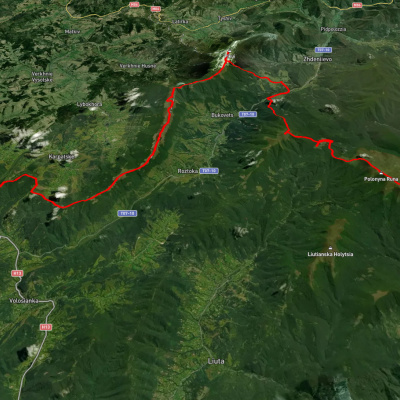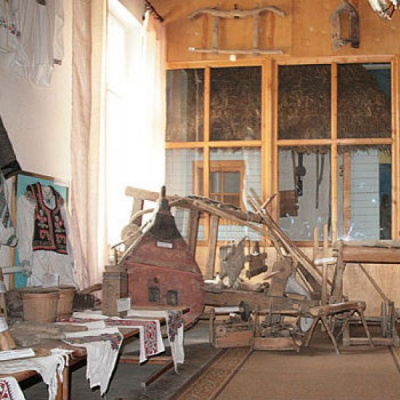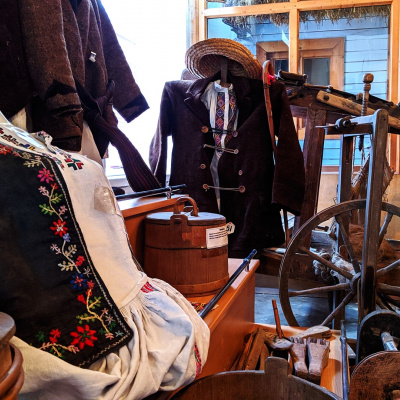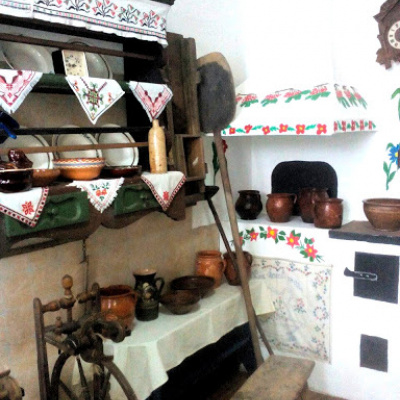Museum Boykivshchyna, Turka
The Boikivshchyna Folk Museum was established in 1987 in Turka by library workers and operated as a department of the library at the time. In 1997, the Boikivshchyna Museum was granted the title of folk museum and now operates as a separate structural unit of the Department of Culture and Tourism. It is a treasure trove of history, rituals, customs, culture, and life of the Boyky. The town of Turka is considered the unofficial capital of the Boyky, an ethnic group of Ukrainians who have preserved their culture, language, history, and hold Boyky festivals here.
The museum has four exhibition rooms. These are: the History Room, the Ethnography Room, the Ukrainian Diaspora Room, and the Mykhailo Zubrytskyi Room. The museum has 1538 original exhibits and 1641 books.
The building where the museum was set up used to be the dental prosthetics office of private entrepreneur Vasyl Dubravsky. The rooms were kept in good condition, so there was no need to repair them. Mykola Komarnytskyi worked on the room's design.
Visitors have the opportunity to learn about the history of Turka, the life and culture of the Boyko, and to see stands with wooden churches of the Boyko type that we have in Turka. In the ethnography room, visitors will see wooden household items, ancient Boyko clothing, and wonderful Boyko embroidery. They will also see Boyko footwear, such as wooden shoes (dovbanyky) and walkers. In the room of the Ukrainian diaspora, visitors will get acquainted with the literature published by our countrymen abroad, as well as with the stage costumes of the Gomin choir. In the room of Fr. Mykhailo Zubrytsky, visitors can learn about the creative work of Father Mykhailo Zubrytsky. His scientific research works, as well as his biography of life and work in the Turka region.
From time immemorial, the Boikos, living in a land with a lot of forest, used wood in their everyday life. They made wooden utensils, shoes, and household items from wood. So we can see that almost all the utensils are made of wood: from spoons to bowls, butter bowls, twin cups, scoops, gelets, nochvy, a shovel for baking Easter cake, a salt shaker, a pestle, and a sieve. We can also see a wooden chair made of a solid tree root, a wheel for a cart, a wooden yoke used to harness oxen and plow a field, washing machines, a spindle, a chain, a pitchfork, a rake, and a shatkovnytsia. All of these are household items in the subsistence economy of the Boikos. Everything the boyko saw was made and used in everyday life.
When a baby was born, the man made a wooden cradle, which he tied to the ceiling and rocked the child. And when the son or daughter grew up, the father would carve a wooden toy, and there was nothing better for the child than what was made by the parents' hands. And how difficult it was to make a loom, or a breaker, or a grinder for technological processing of flax, and how interesting and skillfully made a machine for leather tanning, or a handmade chaff mill. Wood was also used in the smithy. For example, a wooden blacksmith's bag in combination with leather was used to supply air for the fire.
And in order to prepare hay or bring something from the field, the boyko learned to make a cart.
What beautiful clothes our ancestors wore. Woven and sewn from home-made cloth, they wore blouses, labels, skirts, pants, men's and children's shirts, all decorated with embroidery or beads. The clothes were belted with a woven sash. Each village has its own embroidery, its own colors. The Boykins are beautiful and cheerful women, so they used colors as bright as a rainbow.
And the towels embroidered by grandmothers' hands are so pleasing to the eye. According to the folk custom, they were placed under the feet of the newlyweds during the wedding, decorated with icons on the altar, and were used by the hosts to welcome guests on a towel with bread and salt.
They were put on the feet by wooden shoes made of wood, mostly linden, and later were worn by walkers. Already in 1939-40, wealthy peasants were sewing boots or shoes for themselves. They sewed hearts or guni from coarse "beaten" cloth to wear in winter.
In the long winter evenings, the boyko would weave baskets from tree roots and vines. They used them for digging potatoes, picking mushrooms or berries. On winter evenings, women would weave sylianky, gerdany, corals from patsyorky or beads. They used the Boyko pattern with bright colors. A woman's neck and chest had to be completely covered with jewelry.
Our boyko women were so hardworking and cheerful. It's a pity that good old customs have not survived much to this day.
All of this can be seen in the Boikivshchyna Folk Museum in the Turka region. You can also listen to an interesting excursion about the development and history of our region. In addition, ancient customs and rituals can be found in a few villages in the Turka region.
The museum hosts various thematic excursions, lessons in local history, folklore and Easter egg making. Together with the Department of Culture and Tourism, the library and the district People's House, the museum staff participate in various public events and exhibitions, and take an active part in festivals and congresses of boyko held in the Turkivshchyna. The museum works closely with kindergartens and recreation centers.
The Boikivshchyna Folk Museum annually holds the Myron Utrysko Literary and Local Lore Contest, which attracts contestants not only from different regions of Ukraine but also from abroad, including America and Canada. Every year the museum publishes the final literary and local history bulletin of the contest "3 Peaks and Lowlands", which publishes the best works of the contest winners and diploma winners. In total, over 1500 visitors of all ages visit the Boikivshchyna Folk Museum every year.
We sincerely invite people to visit our museum. You will learn a lot of interesting things about our glorious Boyko land, our customs and rituals, and the Boyko culture.
Slavs have long inhabited the Subcarpathian region. Very few documentary materials concerning the history of the Turka region have survived. It is known that the territory of the present-day Turka district was a partially inhabited forested area until the middle of the nineteenth century. Turka itself most likely took its name from the ancient inhabitants of the local forests, the Turians, and not from the Turks, as some believe. The first mention of Turka is dated June 27, 1431. This is confirmed by a charter that Władysław II granted to the knight for his good services. This royal charter was a powerful argument that secured and legitimized the possession of the region.
Turka received the status of a city in 1730. At that time, Mr. Jan Kalynowski initiated the clergy in Turka and the construction of wooden churches (1730-1750). At the same time, he built the town hall, and around the town hall, trades were allowed and were held 9 times a year. Agriculture, fishing, sheep breeding, woodworking and woolen industry developed in Turka. However, this did not significantly affect the welfare of ordinary people. Ivan Franko's visits left a significant mark on the history of our region. The writer came here in 1891. Ivan Franko was most interested in the life of ordinary people.
Accommodation around Museum Boykivshchyna, Turka:
Які маршрути проходять повз Museum Boykivshchyna, Turka?
Пропонуємо пройти такі туристичні (пішохідні) маршрути через/біля Museum Boykivshchyna, Turka: Недільна - Вежа Пам'яті, с. Сянки, через г. Старостина, г. Великий Верх до г. Пікуй, с. Сянки, через Верховинський Вододільний хребет, г. Пікуй до с. Біласовиця, с. Сянки, через г. Дрогобицький Камінь, перевал Руська Путь, г. Пікуй до с. Біласовиця, с. Сянки, через г. Старостина, г. Пікуй, с. Щербовець, г. Остра Гора, Полонину Руна до с. Турички, с. Сянки, через г. Старостина, г. Великий Верх, г. Пікуй до с. Біласовиця
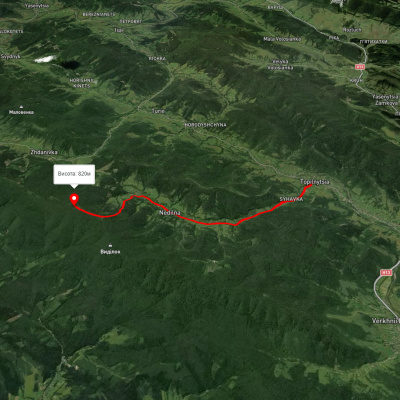
Недільна - Вежа Пам'яті
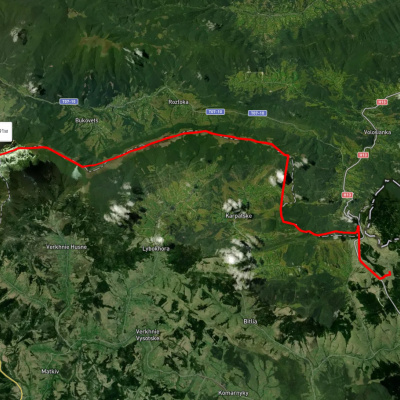
с. Сянки, через г. Старостина, г. Великий Верх до г. Пікуй

с. Сянки, через Верховинський Вододільний хребет, г. Пікуй до с. Біласовиця
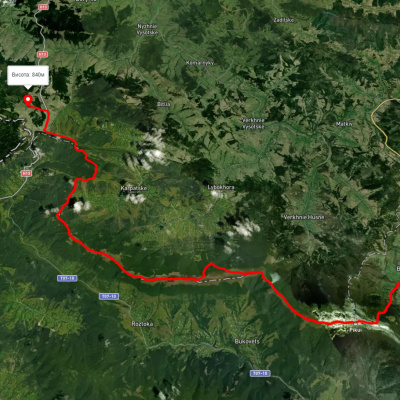
с. Сянки, через г. Дрогобицький Камінь, перевал Руська Путь, г. Пікуй до с. Біласовиця
